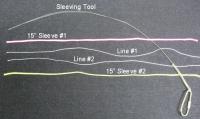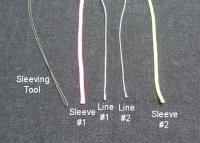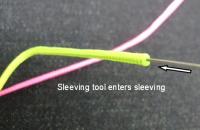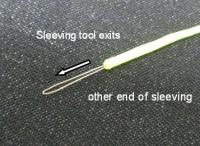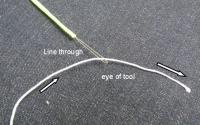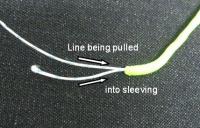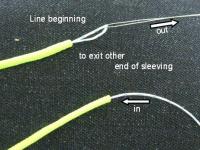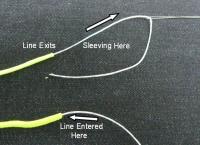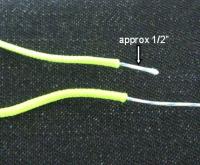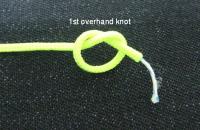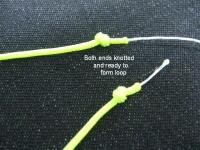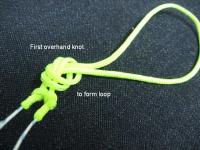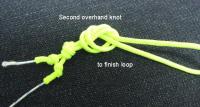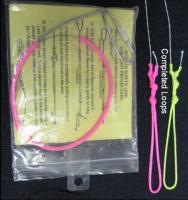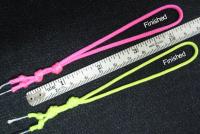-
Posts
2,647 -
Joined
-
Last visited
-
Days Won
3
Content Type
Profiles
Forums
Gallery
Downloads
KL Shop
Blogs
Articles
Everything posted by Reef Runner
-
Gosh, I need a translator ........... I don't have a clue what you guys are talking about, but I hope I win, and then I'll celebrate in "English"
-

Making Your Own Kite Lines (How do you do that?)
Reef Runner replied to Reef Runner's topic in Adjustments and Modifications
Absolutely, the object of this topic is NOT to say "THIS IS THE WAY TO DO IT". The object is to "SHARE YOUR METHOD" & so called, "Tricks of the Trade". We want to get some different ideas, from any and everyone, that is willing to share !! So hey, jump back in here any time................ Nobody is here to criticize, we are all here to learn, plus we are interested ! So please , everyone, share you ideas.........HELP -

Making Your Own Kite Lines (How do you do that?)
Reef Runner replied to Reef Runner's topic in Adjustments and Modifications
Duane, I'm NOT an authority on this subject, not even close. Your thread was "very" informative, and the whole point of this topic, was to get "different peoples' perspectives", on how they handled the task, of "making their own line sets". Pete & I, had discussed this matter quite a bit, so we thought it would be good to reach out to the kiting world, and find out from others, some of the different methods that may be used, to accomplish the same end results. All I did was start the topic, and post, "How I do it". Then, I was hoping that others, just as yourself, would jump in and post, "How you do it", and that's exactly what you did, and exactly what we were looking for................. Just because your procedure is different from mine, doesn't mean that yours is wrong, and it surely doesn't mean that mine is right ! Pete and I, likewise, have very different methods of making line sets, and I'm sure that he will be sharing his views soon. The fact that your measurements are different, only means that we handle the task differently. Everyone has an opinion - we just want to hear them....... So, please join back in................ -

Making Your Own Kite Lines (How do you do that?)
Reef Runner replied to Reef Runner's topic in Adjustments and Modifications
Oh John, that's no fun...........(just kidding & thanks for the additional info) Now for my $.02, well, maybe $.03 OK, I'll start this off, and this post will deal with mainly "Line Measurement". One of the most questionable parts of this process, for me, has been coming up with a reasonable, and fairly accurate estimate, as to the amount of bulk line needed, once I have decided to build a specific line set, for instance, 90# x 100'. It's obvious, if we are making a 100' line set that the individual lines have got to be longer that 100', to begin with. We've got to add "a little extra", to that 100', to compensate for the line used in the sleeved loops, knots, etc. I have always wondered about that "little extra", and pondered if there was a way, to determine that amount, with some bit of accuracy, not only to determine the amount of bulk line to purchase, but to give me a definite "cut length", prior to making my lines. Sometimes, or most times in my case, that "best guess", has ended up producing sets that were several inches longer, or several inches shorter, than expected. Not that this is tremendously important, especially if you are mainly flying alone, but still, I would like to have a starting point, that I could somewhat depend on. So, I thought it would be interesting to hear all "the different processes & procedures, that different people use to make up their line sets". Line measurement is only one of those procedures. As for me, my process begins by pre-stretching the raw line. Many people, have many different ways of doing this, (maybe someone will chime in and elaborate on that topic later), but basically, it just involves stretching the raw spectra line, until most of the "creep", or gradual elongation, has been removed. That's a feel thing, and again, maybe someone else will elaborate on that. Once the pre-stretching is done, then it's time for the line measurement part, plus that "little extra" that I mentioned, earlier. I'll get back to that later. Now, before I begin to measure the spectra line, I'll assume that pre-stretching has already take place, by whatever method deemed appropriate. With this being said, my first step is to clamp or secure, one end of the spectra line to an immovable object, which in my case, is the front edge, of a stationary bench in my workshop. Then I walk the line directly out through my garage door, continuing down my drive way, where I have permanent marks on the edge of the concrete, measured precisely, from the front of my workbench, beginning at 50', and then at 10' intervals, on out to 120 feet. Once at the appropriate mark (in this case 100 feet), I measure, or add-on, "that little extra" length, that I mentioned earlier, and then I place a kite stake "firmly" in the ground, at that exact point. I then carry the line around the kite stake, and back to the front of my workbench, where I pull the line fairly snug, just to remove any obvious slack. Then I temporarily secure this second end to the front of the workbench. At this point, from the bench, out to the kite stake, and back to the workbench, I have exactly two "cut lengths", roughly measured. NOTE: if you are making a quad set, before doing anything else, you may want to repeat this process by making another complete pass with the line, from the initial starting point (workbench), back out to the kite stake, and back to the beginning. This will give you the two additional lines, for the quad set. Now, to equalize the (2 or 4) lines, I release the lines from the front of the workbench, and gently pull on them (pulling against the kite stake), individually and/or together, until each line hangs exactly as the adjacent line, both under tension, and when allowed to sag. Once I am satisfied that all of the lines are equalized, I once again clamp them all together, to the front of my workbench, where I make a mark across the lines, with a Sharpie pen. This will be my final cut mark(s) for each line. Now, I go back out to the kite stake, pull it out of the ground, and with the line(s) still running around the stake, I step back just a little, to take up any slack, again checking to see that all of the lines remain equal, both under tension and when allowed to sag. Assuming that everything looks good, and all lines are still equal, I mark the line again, exactly at the back center of the kite stake, dividing the line(s) into two equal segments. At this point, I cut the line(s) cleanly, for the first time, and lightly fuse the cut ends (if you don't have a hot knife, a match or lighter will do). Then I go back to the work bench, where I cut & fuse the (2 or 4) lines at the Sharpie marks. Now I have (2 or 4) equally matched lines, ready to be sleeved, which if all goes well, will end up equal in length, and at the desired finished length, +/- an inch (maybe two), but very close. Again, that finished length, is determined by that "little extra", that I added on during in the initial measuring process, as well as how the sleeving is measured, knotted, and looped. NOTE: For the finished lines to come out equal, the sleeving material must be precisely cut & fused to the exact same lengths. Each end of each line must then be sleeved, knotted, and looped identically, from loop to loop and from line to line, with the only variation being possibly, sleeve color, for desired ID purposes. Now, as I have referred to, several times previously, should you want that set of lines to end up at a specific finished length, that's where the "little extra", comes into play. That's what got me to thinking about this whole process, in the first place, and after all this deep thought, discussion, and burning up of good brain cells, as well as agonizing (not really) over the whole situation, I suppose that it all comes back to the one big question, "Does a few inches either way, really matter?". IMHO, the answer to that is "NO", as has been stated elsewhere in this forum several times. What is much more important here, is that the lines that you make, are consistent and equal to each other. However, being somewhat of a perfectionist, occasionally I get hung up on the calculations, and the precision of those calculations, and that's all that the remaining part of this post, is really about. So, I did some actual trials, and I did some simple calculations, and I came up with, for lack of a better term, a pretty decent planning tool, so far as determining, the raw line needed, to yield a predetermined finished length. I also put together a few charts, for my own use, that have worked quite well, and provide me with a quick, and pretty accurate reference point, however, the forum doesn't like Excel Spreadsheets, so I'll spare you those. But, as for predetermining, that rough "Cut Length", there is really nothing magic about it. It's just simple math, and being consistent with what you do, from loop to loop and from line to line . So far, my trials have yielded finished lines, within +/- 1", or less, of the specified, or desired finished length, and here's all there is to it, (and yes, it's quite simple, but bare with me, I'm trying to explain this for someone that's never done it). So to come up with a very close, "rough cut length", that will yield a "specific finished length", try this: Take "the desired finished length", add "one (1) length of sleeving", then add 3 inches, then add another 3 inches, and this gives you a rough "Cut Length", for the raw line. See, that's pretty simple, add one length of sleeving plus 6 inches, for each line, and so far, and it has worked out perfect for me, BUT for this to work, again, you have to use "evenly cut" sleeving, and you'll need to knot that sleeving precisely the same, on every loop, and somewhat close to the method that I describe below, however, I'm sure it will come out very close, no matter what your preferred method of knotting may be. Just be consistent. This is how I sleeve and knot: (see photos below) First of all, after pulling my line through the sleeving material, I allow the line to extend about 1/2" out the terminal end of the sleeving. Then I tie an overhand knot, in the sleeving, about 1/4" from the terminal end of the sleeving, leaving the 1/2" of line protruding. Then I hold to that knot, and firmly pull the sleeving back down the line, away from the knot, so that it becomes tightly stretched, over the spectra line. Then, when I'm sure that there is no slack and nothing loose, I tie a second overhand knot, about 1/4" from the other end of the sleeving. Now, with the sleeving secured on the line, I bring those two knots together, to form the loop, and proceed to tie, two (2) overhand knots, in the doubled sleeving, just above the previous knots. Try to tie these knots smoothly, with no line roll-overs, which will help to prevent, the spectra line from creeping, or slipping through the sleeving under stress. Now, do this precisely, on each end (or do it with your preferred method), and your finished line, should end up very close to your desired finished length. Bottom-line: My goal was simply to come up with something, that would indeed, "get me close, very close", to a designated line length, should that be desired or become important, plus, I normally order my line, by the foot, in bulk, according to whatever length set, I plan on making. This being the case, it's always good to be close, although, vendors usually do put a little extra on the spools, just to be sure, but still, my chart enables me to quickly reference the total length of line to order, for whatever sets I may be planning to make. I suppose, short of buying one of the 3000 yard spools, and not worrying about waste, it's more of a planning & ordering tool, than anything else. Here's a quick example: Assume you want to make a 100 foot line set, and assume that your sleeving is 15" long (can be any length). Here's how I would calculate the rough "cut length"............. 100 feet (1200") + 15 inches + 3" + 3" = 1221 inches (or) 101.75 feet (or) 101' 9" which is the initial 100 feet, plus 21 inches (that's the little extra) NOTE: the +3" and +3", is for the knots, etc, made in each loop, on each end of each line, and that, along with the one length of sleeving, ends up being that "little extra", that seems to make things work out right, in the end. Examples of some popular line lengths, when using 15" sleeving, so you just add 21" to the "desired finished length", per line ! For 120 foot finished lines – cut the raw lines 121.75 feet or 121 feet 9 inches (or) 120 feet, plus 21 inches For 100 foot finished lines – cut the raw lines 101.75 feet or 101 feet 9 inches (or) 100 feet, plus 21 inches For 85 foot finsihed lines - cut the raw lines 86.75 feet or 86 feet 9 inches (or) 85 feet, plus 21 inches For 80 foot finished lines – cut the raw lines 81.75 feet or 81 feet 9 inches (or) 80 feet, plus 21 inches For 75 foot finsihed lines - cut the raw lines 76.75 feet or 76 feet 9 inches (or) 75 feet, plus 21 inches For 50 foot finished lines – cut the raw lines 51.75 feet or 51 feet 9 inches (or) 50 feet, plus 21 inches For 30 foot finished lines – cut the raw lines 31.75 feet or 31 feet 9 inches (or) 30 feet, plus 21 inches For 25 foot finished lines - cut the raw lines 26.75 feet or 26 feet 9 inches (or) 25 feet, plus 21 inches -
A few weeks ago, we had a great topic going, called "Laser Pro Gold and Other Spectra Lines". The basis for that topic, was initially aimed at, availability, and/or, non-availability, of spectra line, Laser Pro Gold, in particular. Seems that there is no shortage, for now, so that's good news, however, during that discussion, there were quite a few replies, that somewhat veered off of the main subject, and described in detail, exactly how many of us make-up our own kite lines. There were descriptions which explained how we measured, sleeved, knotted, and looped, our lines, to come up with that perfect set of flight lines. Based on that outpouring of valuable information, I thought that it would be a great idea, to start a topic, to cover that subject, exactly.................. SO, lets hear it.............Spill the beans - HOW DO YOU MAKE UP YOUR LINE SETS ?? Give us measuring details. How do you get that exact length? Tell us how you sleeve your lines, and how long the sleeving is. Let us know how you knot your sleeving, to form the loops, etc. Photos are always great !! I know that all of this sounds "elementary" to many of us, but it's not elementary to the "Newbie". Remember those days? Remember when you just didn't have a clue? So help out here, and share any and all details, that you are willing to share, and lets help out the "Newbie". This isn't rocket science, you know. Let's make it easy for the Newbie, who may just be coming onto the forum for the first time, to find out exactly, how to make that first line set..............
-
That seems just about "perfect". As for myself, I just try to keep everything in one bag, that way, if I forget the bag, well, I have forgotten the , well, let's don't even go there I think you should have it covered now.................
-
1. There was some kind of compatiblity problem, can't remember exactly what, but I think he had an SLE, and I had 1/4", or it may have been Rev I vs. 1.5 2. But no matter how many your've got, you've still got to remember to take them with you 3. Did you really say that ?
-
Pictures...Pictures...Pictures!!! OK here are some of the girls I was with http://sportsillustr...n.com/swimsuit/ Next time, when they are at the beach, I'll get in the pictures with them as we're flying my Revs!! And here's a picture of my knee: Now you can understand why they were so attracted to me...it wasn't just the kite!! heehee!! Keep It Up! Duane So, which is the bad one Might ought to give them both a rest............... Hey, get off of them for a few days !!!
-
Hey Pete...........reference http://kitelife.com/...dpost__p__26039 .............talk about
-
So, now I'm back, and as before: Why do I fly kites ? Doesn't Everyone Well obviously not. Not around here, anyway. I've been flying kites for around 10 - 11 years now, 95% of that, while on vacation at the coast. When you mention flying kites around home, people tend to look at you, like you're strange, but at the coast, it's more like, okay, so what? Things seem to be a little more laid back in the resort areas, and I think people tend to expect, and/or overlook, most anything. So what's the big deal, with a few people out there flying kites, on the dunes, or on the beach? Nobody really gives it a second though, but back home, not only do people give it a second thought, I believe that many give it a third, and maybe even a forth, thought. I've even noticed adults (kids not included), that will actually tend to avoid you. They will look away, and even pretend not to see you, when all the time, it's so obvious, that they are trying, in their inconspicuous manner, just to sneak a peek, probably back to their own childhood days, but only when they think you aren't looking, of course. This, I'll never understand, but as the old saying goes, "People are Strange", so why press the issue. Is it them, or is it "us"? Well, maybe "we", the kite fliers are strange, comparatively speaking, but all in all, I think we are a pretty benign group. At least we aren't harming anything, and for the most part, anyone, with the exception of the occasional "Newbie", and a possible mishap. We surely aren't using up any valuable resources, and all in all, we are just out there blowing off some steam, chilling out, relaxing, meditating, kicking back, killing a little time, and just enjoying life and the great outdoors (and indoors), and the list goes on, I suppose. I mean, what's not to enjoy? It's just you, your kite, and the wind, doing your thing. Actually, it's a pretty cheap high ! So, why do I fly kites (?), you ask. That's why. How did I become a flier (?), well that's a whole nother story, but common sense tells us, that the answers to both of these questions, are definitely intertwined. As for me, my passion began 10 - 12 years ago. At that time, my wife and I had been going to the NC coast, for years, mainly during the spring, summer, and early fall. We really enjoyed the NC Outer Banks, and in particular, that 20 mile stretch of barrier islands, known as Nags Head, Kill Devil Hills, and Kitty Hawk. Oh, Kitty Hawk, the birthplace of manned flight (how appropriate?), the Wright brother's, and all that. "Wrong", but close, all of that actually took place in Kill Devil Hills (it's a common misconception), but that too is a whole nother story, too. Now back to kiting. Anyway, after years of jumping from spot to spot, roaming the beaches, fishing, sitting on the beach, reading books, and just kicking back, I finally realized that I was beginning to get bored, with the beach scene. Sure it's a great place to spend time, but just how long, can someone sit on the beach, read, and whatever. I mean, you can't drink beer all day. Then one trip, I decided, out of the blue, and out of sheer boredom, that I was going and get myself a cheap (I didn't even know the name) delta kite, that I could put up in the sky, tie to the chair, and at least have something different to look at. Why not, I had seen other people flying kites? Seemed like a great idea to me. Well, I couldn't even get that $3 delta to fly right, but I noticed a guy right down the beach, flying a much larger, 4 or 5 foot delta, with a large flowing tail. That thing was sitting up there like it was pinned to the sky, so I ventured over to find out if I could get some help. Yep, it seems that I needed a tail on my kite, for stability. Well, I didn't have a tail, but I did have a piece of string, so I tied a small piece of driftwood to the piece of string, attached it to the kite, and straight up it went. Learned something! No more dipping over to one side and diving uncontrollably to the ground or ocean, just up, up and away, and so was I. Well, this of course, lead to some more delta kites, bigger delta kites, more expensive delta kites, and tails, plenty of tails, and then kite bags, and before I knew it, I was a kite flier. Yes, that's how I became a flier, but the story doesn't end there, of course. As the years came and went (actually only a couple of years), one day, I was proudly sitting there watching my beautiful delta kite, pinned to the sky, and there down the beach, was this guy flying (again, I didn't have a clue), a kind of erratic kite. Yep, it was a dualie. Well, I'm wondering how come this guy, has this pretty kite, and obviously a very nice kite, but he can't afford more than 80 – 100 feet of line. He was hardly off of the ground, and the poor guys kite was going everywhere. Maybe he needed some tail on that thing, just to calm it down a bit, but being new, I resisted the urge to go down and make the suggestion. I just continued to watch. Then, all of a sudden, and with the help of my binoculars, the light bulb came on. That guy's got two strings on that kite, not very long stings, but two, so what's up with that? Now, I did have to mosey on down, and check this out. This I've got to see, and as they say, "the rest is history". Yep, the guy gave me a quick run through on flying dualies, showed me how to control it, and yes, he defiantly got my attention. He offered to let me give it a whirl, but I didn't dare. I thanked him for the intro, and was on my way. Now my big pretty delta kite, pinned to the sky, didn't seem quite so exciting, in fact, it seemed kind of, ho hum! So, hey, let's go to that big kite store (Kitty Hawk Kites) in Nags Head, and look around, just look. Well, being very close to my birthday, my wife says, go pick out a kite, and she would get it for me, for my birthday. So here we go, stage two, dualies, and what did I pick out for my first real kite, a beautiful "Prism Fanatic". Don't laugh, this was a pretty neat kite, back10 or 12 years ago. So back at the cottage, I finally figured out how to put it together, and out to the beach "we" went. I didn't know about kite stakes then, so my wife became my "kite runner". I would take off and she would run and pick it up, over, and over, and over. Finally, I got to where I could keep it in the air for more than 10 seconds, giving my "kite runner" a break. Eventually, I learned about kite stakes, and now, my wife was able to get back to her beach chairs, umbrellas, and reading, and the best part, I could set-up the kite, and fly it by myself, and boredom was a thing of the past. As the years ticked by, we continued our annual treks to Nags Head. Eventually, we locked in on the same cottage, so now, we are staying in a cottage, that belongs to a, "now", good friend. And where, you ask? Well, just coincidentally (or maybe not), it just so happens that this cottage is located directly across the highway, from Jockey's Ridge, one of the greatest kite flying spots on the East coast, and right behind, Kitty Hawk Kites, in Nags Head, NC. We are usually there, 3 or 4, sometimes 5 weeks, during the summer, and that's when I really do most of my kite flying, but what a place to fly. It's the beach early and late in the day, and then as the beach begins to fill, during peak season, it's across the road, and up on the ridge, where you can fly, till you just can't fly anymore. So, as I mentioned earlier, I got my first real kite (a Prism Fanatic) from Kitty Hawk Kites, some 10+ years ago. I didn't know anything about flying stunt kites, and I basically taught myself to fly, and believe it or not, I've still got that kite, and it's in excellent condition, and remains one of my favorites, and one that will always stay in my kite bag. Not to say, that it didn't hit the sand quite a few times, but never with any catastrophic results. The sand dunes, do tend to be, somewhat forgiving. But there's more. Later on, some 8 - 9 years after the Fanatic (2009, actually), and some 20 - 25 stunt kites later, an online kiting buddy of mine, got to chatting with me about this strange kite he had seen, somewhere on line. It was a Revolution kite (?). Again, somewhat new to me, although I had heard the term mentioned somewhere, but this thing had four lines, I thought, and I knew that I didn't have any interest in that. I was perfectly happy with my dualies, and I really didn't want anything to do with one of those Revolutions. Well, then one day, out of the blue, a package arrives at my home, and my buddy has sent me a brand new Rev 1.5 SLE. Oh NO! What am I going to do now? I didn't have a clue what to do with that thing, and yep, it definitely had four lines, and handles. I actually made two trips to the coast, and never even put it together, never even took it out of the bag. I just didn't want to get into that four line stuff, but, with all due respect to my friend, he had sent me the kite, and he kept asking about how I was coming with the Rev, so I had to do something. I couldn't keep putting this thing off, so one hot summer day, just a couple of years ago, when it was about 95 degrees, and at least 10 degrees hotter, up on Jockey's Ridge, I realized that the dune was basically deserted (probably the heat). None-the-less, this looked like my chance, so I took off up the hill, with my wife as my co-pilot (here we go again), but believe it or not, after a bit of fussing and cussing about the lines, I kinda got it figured out. Another day or so, and I could actually fly that Rev, not great, but at least I could keep it off the ground. My biggest problem continued to be line management, but having been accustomed to winding up my dual lines, I understood the basics of what needed to happen, and eventually, I got that figured out, kinda. Then, some guy named John Barresi comes along with these Rev tutorial videos, and there it was, my salvation, "Line Management". Once or twice viewing that video, and problem solved. Now, if I could just get the flying part down, half so well, as the line management part. Anyway, I suppose that I'd still be considered a "Newbie", for now, anyway, because I am definitely still learning, but I'm trying hard, every chance I get. So right now, after a really tough winter, I am so looking forward to a great summer, and doing something about that "Newbie" status. OBX, here we come. So, if you got this far, that's my story, and I'm sticking to it ! That's how I became a kite flier. Fate, I suppose (?)
-

On the Lake (John H Kerr Reservoir) NC/VA line
Reef Runner replied to Reef Runner's topic in Favorite Kite Fields
Well, I wouldn't go so far as to say it's beautiful, but if you can't be on the coast, then the lake will have to do..............plus it's less than 2 miles from the house, and if the wind is S or SW, it'll do. Trust me, it's not like flying on the sand -
Nick...I think you replied to the wrong post...I think you meant to post that in the "Clip On Kite Stake" post?!?! (It's WAY after 5:00!! heehee!!) Keep It Up! Duane And what kind of logical sense, would that have made? I understand about your hearing problem, but your comprehension is ok, right ? Besides, you DIDN'T ask a question in your post about the "Clip". You were simply showing off one of your brilliant ideas (seriously, good idea) Now on the other hand, Wayne asked a question in this post, and I responded with a question plus, I SHALL RETURN...........When I have time to respond completely !!! Possibly, it was way way after 5:00, when you posted your comment, way too late So hey, if you're going to play pay attention !
-
Doesn't everyone ?
-
Flew out on the lake today, about a mile from home. Slipped into one of the State Parks. No one there but me. Had great wind, 10 - 15 out of the southwest, coming right off the water.............sweet but a little much for the 1.5 standard B. Should have had the mid-vent or full vent, but took it easy and tried not to break anything.... http://maps.google.com/maps/ms?hl=en&ie=UTF8&msa=0&msid=216189808592016584571.00049ecc90564dc36ea71&t=h&ll=36.405879,-78.386507&spn=0.028323,0.065231&z=14
-
I don't know what Bazzer uses, but most that I have seen, have been done with various colors of "Sharpies". They are permanent and will stay in place, for a long long time. Always, "A L W A Y S", do a test "dot" or "mark", in some inconspicuous spot, to test for ink run, but I wouldn't expect that to be a problem on rip stop, as it might be on cotton, or some other natural fiber.............. Now, if you can find all the colors that blow your skirt (Staples has an assortment pack), you've just got to become an artist, but I thought you already had that part covered, so shouldn't be a problem...... Now if you don't like Sharpies, "Testors" makes what is called a "Paint" pen, but I haven't tried that on fabric, yet. It's basically the same paint, that we used as kids, on model cars, etc, but it's in a nice convenient little pen......(I got black, red, silver, gold, etc)......... I use them for applying ID's on many things, like tools, etc............. works great on most non-porous items, but I don't know about fabric, however, I would think it should do fine, on something like rip stop, but again, TEST first. I know that I got some on a tee shirt by accident, and that shirt has been washed a dozen times since, and the mark is still there. The best thing to do PD (prior disaster), is to go by a fabric shop (Jo-Ann Fabrics or maybe Wally World) and get yourself a yard of rip stop fabric, stretch it out flat and do some paint test. Thats the only way to make sure, before you really screw something up, like a $300+ kite.............IMHO Lots of people hand paint kites, especially the Rokkakus............Look up kite painting, and get some suggestions there. Try Google. That ought to be a pretty straightforward search.............. (even for you)
-
I'll have to take a look. I never bought a kite book. Maybe that's why I don't know what the I'm doing, but I it anyway !!
-
Hey Duane, This could be the first brilliant idea, you've come up with, in a long time, and it actually makes half-way, good sense ! Here's to you................ It's 5 o'clock somewhere ps............and Pete's probably already in the wine celler, anyway !!
-
To that point, let me share one trick to getting them equalized right from the start. If you're going to make a set of 120 foot lines do this: 1) Sleeve the first end with your top sleeving. 2) Measure out 120 feet (+/- your extra length for one sleeving) then go around a pin and back to the beginning. 3) Cut and sleeve that end with your top sleeving. 4) Now go back to the pin and put the loop through a carabiner or pulley ... tug on the loop with double your normal pull ... a little less than 2 X 0.65 X line strength. The trick is that you now have induced equal creep into both of your top lines. If you pulled each one independently, the creep will be slightly different and will show up during the first few flights. 5) Cut the line right at the loop and sleeve the two remaining ends. Or double check the length and cut accordingly ... I guarantee it'll be too long. I usually end up with an extra two foot plus cut off piece ... Now you have a matched set of top lines ... repeat for the bottom lines and you're good to go. None of the above will make you a better flier ... it'll just give you more time to fly ... and take away one of your normal excuses for why the kite won't behave. Cheers, Tom Hey Tom.............Great method, process, or whatever. You've definately got a point, on equalization. I'll try your way, on the next set................
-
This is a "family" forum !!
-
Easy enough: just set up some nails at the proper length; pick the knots out (used dental picks with the tips slightly blunted/polished are good for this); slide the sleeve inwards; and re-tie at the "right" length. (And cut off the excess.) That works for anyone with slightly long lines. if you made them under-length, you just have to make a loop of bridle line with a knot for the line larks head at one end to extend your lines by the amount of shortage. You will probably want to put the extension at the handle end of the lines to keep the weight at the kite down. Or not! As Sirrom and JB (kitelife) said, up to three feet doesn't seem to be a problem and may even let you "tune" the team by deliberately choosing who gets which lines (or who flies at which position) Well, I'm not going to loose too much sleep over it, because as Duane and I have both mentioned, "There are no 'others' here!!", so no sweat........ However, I do understand, what you are saying !
-
It's so; especially if you add on a few inches "for luck". (And perhaps you've made a clearer explanation of WHY it's so.) Gotcha covered big guy ! I always add a few inches "for luck" & "for knots" !
-
Well, that just about does it, don't it As I see it, and as most have assumed, the "exact" length issue, is really not all that critical (withing reason) It appears that the real focus, as always, should remain on getting everything equalized. I think we can all agree, that this "IS" critical ps............hey JB, thanks for jumping in here, we were all curious about that
-
Well, I'll give fair warning, right now. Anyone that flies with me better watch out, because all of my line sets, are 16" longer than I say they are ! I suppose I've been messing up, all along, but as Guru4tru said, "There are no 'others' here!!", so no sweat................. I really don't believe that this is going to be, a life altering event.....................
-
Well, after all of this discussion, I think that Pete hit the nail on the head (again). If for example, you are using 16" sleeving, and you are making a 100' line set, then the raw line length, needs to be 100' + 16". Then when you apply sleeving to both ends (the same length), and you double them over to make the loop, everything should even out to the desired length, no matter how long the sleeve. Seems like your sleeve length, whether it be 12", 16", 20", or 24" (I know, it's just an example) should determine the extra amount of "raw" line, you need to add to the desired final length. example: you're making 100' line set, and you're using a 16" sleeve, then you should begin with 101' 4"............. Isn't that what you were saying Pete ???? Say it's so Pete, say it's so ! :big_beer:
-
Yes sir, it is............I have just always thrown in a little extra, to make certain I didn't get shorted. I usually order my bulk line by the foot, NOT in spools of a certain length. If I need 730 feet (just an example), that's what I order.................so I don't worry about having a bunch of waste. As for the loops, I cut 15" pieces of sleeving, which is 30" per line (not quite 3 feet), so yes, I have just a few inches of extra. MY QUESTION IS THIS ??? Just for discussion purposes, for example: If I am going to make, what we will call, a 100 foot line set (dual, quad, or whatever), do I start with exactly 100 feet of line, or are you suppose to add for the sleeved part (15" on each end), which in turn gets cut in half, when you double it back, to make the loops. If NOT, then the line set is going to get shorted 100' - 7.5" - 7.5" = 98' 9" (because you use up part of the original 100 feet, for the loops) If you DO add the 15" that is going to be sleeved, onto each end of the original 100 feet, then, You end up with a line set that is longer than 100 feet 100' + 7.5" + 7.5" = 101' 3" And none of this takes into consideration, the amount of length, that you lose, due to the knots tied to secure the sleeving and to make the loops, which is generally 1/2" to 3/4" per knot. And then, throw in Jeepster's "Creeping" theory......................... Does anyone know if there is a proper procedure, for measuring the raw line, for a line set of a specific length, or DOES IT REALLY MATTER THIS AIN'T SUPPOSED TO BE ROCKET SCIENCE !!! Right I'm still confused...........


